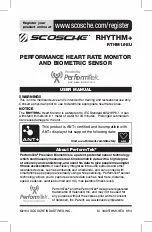
30
Entek IRD 6652 DSP Protection Monitor
Configuration
ECCNTRY submenu
The ECCNTRY submenu has the following options. These options work with the alarm
setpoints on the ECCNTRY submenu under the User menu (page 18).
For more information on the 6652 DSP and vector monitoring, see “Understanding Vector
Monitoring” on page 36.
CHECK ECCTY SPEED message
If you see the “CHECK ECCTY SPEED” message when you try to exit the ECCNTRY
submenu, it means that you have chosen a setting for RPM LO that is greater than the setting
for RPM HI. You cannot exit the ECCNTRY submenu until the setting for RPM LO is less
than that for RPM HI.
TX OK submenu
The TX OK submenu has the following options. These determine the limits used for
detection of transducer faults. They also enable the monitor to detect and correctly trigger
on a tachometer input signal.
Factory menu
→
RANGES
→
ECCNTRY
RPM LO
100.0
RPM HI
1000.0
EXIT
SET
MON ECC
+ RELAY
MON ECC
Choose the action of the Danger vector (eccentricity) alarm relays:
l
+ RELAY - Vector monitoring uses the second Danger alarm relay for
vector (eccentricity) alarms (relays 4 and 7).
l
- RELAY - Vector monitoring does not use any alarm relay.
l
DISABLE - Turn off vector monitoring.
RPM LO
Choose the low end of the speed range over which the 6652 DSP performs
vector monitoring (1–18,000 RPM).
RPM HI
Choose the high end of the speed range over which the 6652 DSP
performs vector monitoring (1–18,000 RPM).
EXIT
Return to the RANGES submenu. The monitor remembers the current
values for menu options, but does not write them to memory until you exit
the Factory menu.
TX HI
1
TX LO 2
TX HI
2
TACHO
OFFSET
EXIT
TX LO 1
SET
Factory menu
→
TX OK
TX LO 1
Choose the most negative acceptable transducer gap voltage for channel 1
(-24.00 to 23.00 volts).
TX HI 1
Choose the most positive acceptable transducer gap voltage for channel 1
(-23.00 to 24.00 volts).
TX LO 2
Choose the most negative acceptable transducer gap voltage for channel 2
(-24.00 to 23.00 volts).
TX HI 2
Choose the most positive acceptable transducer gap voltage for channel 2
(-23.00 to 24.00 volts).
TACHO
Choose whether a tachometer input signal is present (NO, YES).
OFFSET
Choose the DC voltage at which the monitor will trigger on the tachometer
signal (-24.8 to 25.0 volts). Ideally, this is the midpoint of the tachometer
pulses, and is determined by the output from the tachometer.
EXIT
Return to the Factory menu. The monitor remembers the current values for
menu options, but does not write them to memory until you exit the
Factory menu.
















































